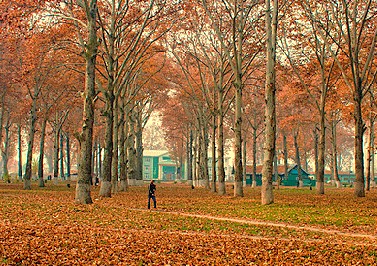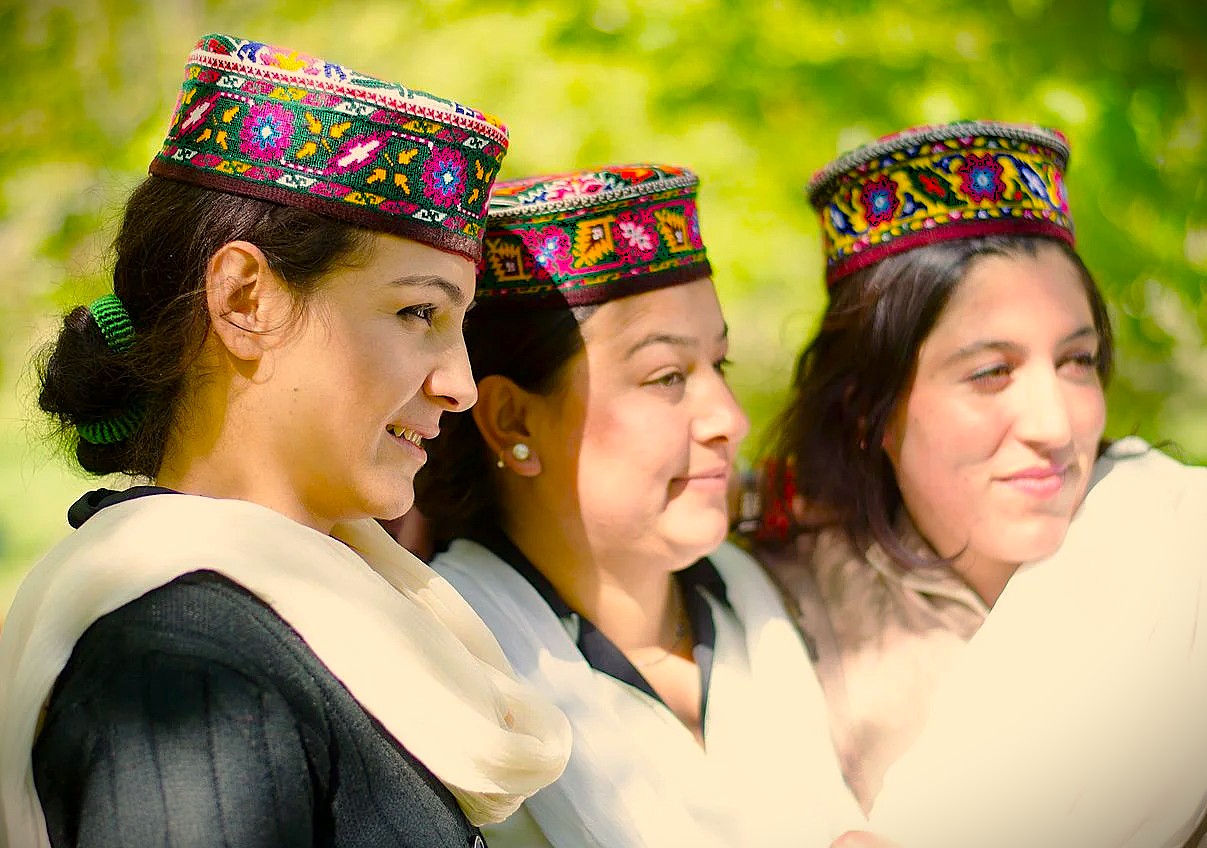Kashmir
Chinar Bagh Ghat Srinagar Kashmir
Mother Masala Tours
Himalayan Panorama:
Chinar Bagh Ghat Srinagar Kashmir. Positioned along the iconic Nigeen Lake. An embodiment of history, serenity, and natural beauty. The name “Chinar Bagh” reflects the rows of majestic Chinar trees - Platanus orientalis, which are native to this region and have been a part of Kashmir's culture for centuries. This ghat, part of a broader historic garden area, was developed during the glorious reign of the Mughals in the 17th century. The Mughal Emperor Jahangir and his wife Nur Jahan were known to have contributed significantly to the development of gardens and landscapes in Kashmir, including the planting of Chinar trees throughout the area.

Chinar Bagh Ghat Srinagar Kashmir: Timeless Artifacts
Chinar is part of a heritage that intertwines natural and cultural elements. The ghat leads directly to the serene waters of Dal Lake, surrounded by ancient Chinar trees that are themselves considered living artifacts. These trees are thought to have been planted during the Mughal Empire rule, their roots deep within centuries of history. Nearby, the ghat provides access to a few lesser-known yet highly meaningful shrines and memorials.
Ancient Mosaics: Impeccable Craftsmanship

Chinar Bagh Ghat Srinagar Kashmir. The artistry evident in and around Chinar reflects the legacy of Kashmir’s skilled artisans. The hand-carved benches and pavilions dotting the garden area near the ghat were created using woodwork techniques refined over centuries. The use of Kashmir cedar wood lends endurance to the structures, which blend harmoniously with the natural beauty of the Chinar trees. Some of the older portions of the Ghat itself, though now weathered, still retain the carved stone blocks often associated with the Mughal approach to water connectivity.
Dal Lake - Nigeen Lake: Sisters with Different Personalities
Located just 3-4 kilometers apart, Dal and Nigeen lakes provide different experiences that complement each other. Dal Lake is Srinagar's heart - a sprawling aquatic neighborhood spanning 18 kilometers. The vibrant floating markets have vendors paddling to your shikara selling saffron, handicrafts, and fresh flowers. The floating gardens grow delicious vegetables. Sunrise boat rides capture golden light on Zabarwan mountains, while evening cruises reveal spectacular sunsets. Nigeen Lake is Dal's quieter sister. Connected by a narrow channel yet distinct in atmosphere, this 1.5-kilometer lake has clear emerald waters.
The Pulse of the Local Community

Chinar Bagh Ghat Srinagar Kashmir. Life is peaceful yet active. The local community takes care to preserve the integrity of its surroundings, treating the area with respect. Many earn their livelihood by crafting or growing traditional Kashmiri products, from delicate pashmina shawls to harvesting saffron or lotus stems. The essence of this place is deeply tied to care for tradition. The streets hum with activity as artisans work on intricate wooden carvings and colorful paper mache items. The aroma of cuisine fills the air as locals prepare dishes with ingredients grown nearby.
Capturing the Magic: A Photographic Haven
Photography includes the grand old Chinar trees with their distinctive maple-like leaves changing colors through seasons. The camera catches reflections in the calm water as locals wash clothes or perform daily rituals along the steps. During the Shikara boat ride, lenses point toward floating markets with vendors selling local produce from their wooden boats. The Dal Lake horizon presents a panorama of houseboats lined against mountain backdrops perfect for wide-angle shots.
A Culinary Journey: Savor the Flavour

The ghat's surroundings introduce us to some signature culinary dishes synonymous with Kashmir. The gardens are a perfect spot to enjoy a warm cup of Noon Chai - salted pink tea, made with green tea leaves, milk, and baking soda. Served with Kashmiri breads like Girda or Bakarkhani, it makes a comforting moment to appreciate the atmosphere. We also find local delicacies like Dum Aloo, a popular Kashmiri curry prepared by slow-cooking lightly fried potatoes with yogurt, fennel, and a hint of ginger powder. The aroma of Rogan Josh, lamb cooked with aromatic spices, often fills the air from nearby eateries.
Festivals of Devotion: Honoring the Sacred and the Divine
The area nearby is alive with devotion and activity during major local festivals. One such festival is Eid-ul-Adha, during which prayers and acts of community sharing cultivate a mood of togetherness. Likewise, Navroz, a celebration of the Persian New Year observed by Kashmiri Shias, sees gatherings in serene spaces like this ghat. The festivals not only preserve religious sentiment but also highlight the vibrant cultural dimensions of life in Srinagar.
The Connection with the Gods

This Ghat has historic connections to Hindu deities Shiva and Durga through small shrines located along its perimeter. Local Hindu families visit these sacred spots during important days of the lunar calendar. The statues of them are carved from stone by artisans who follow traditional Kashmir styles. Shiva's symbol is a trident while Durga appears with multiple arms holding symbolic weapons. These representations date back centuries when the area had a larger Hindu population. The ancient chinar trees hold significance in both Hindu and Muslim folklore.
Ancient Technologies: Sacred Sound, Geometry & Astrological Influences
The layout, like many Mughal Gardens, was planned using time-honored principles of geometric alignment to create balance and harmony. The linear distribution of trees, the symmetry of open spaces, and the direct flow to the waterfront all reflect this understanding. These pathways and plantations allow for natural sound harmonies - whether by rustling leaves or birdsong - that create a naturally meditative space. Vastu Shastra principles guide the orientation of key elements toward cardinal directions, particularly north-south alignments. The garden dimensions follow ancient proportional systems related to cosmic mathematics. Sound frequencies in this area resonate at specific hertz levels similar to Solefeggio tones used in traditional healing.
Serendipitous Meetings: Beyond the Main Path

As we walk through Chinar Bagh Ghat Kashmir and its surroundings, pleasant surprises often greet us. Local weavers quietly spinning threads of pashmina on handlooms or farmers transporting lotus flowers across the lake are sights common here. Small shops along pathways also provide glimpses into hand-dyed fabrics, saffron, and walnut wood carvings. The morning light filters through the chinar trees creating patterns on the ground. Craftsmen can be seen restoring old wooden structures with carvings that tell stories of generations. The seasons transform the area as leaves turn from green to amber to bare branches.
Urban Legends: Strange Sightings, Myths, and Mysteries
Chinar Bagh Ghat Srinagar Kashmir. As the sun sets over the Ghat, tales of legends quietly emerge. Locals speak of mysterious lights reflecting off Nigeen Lake, thought to originate from spirits who take refuge beneath the ancient Chinar trees. These stories are tied to beliefs that the trees hold protective powers, safeguarding the surrounding community. Another legend recounts how the soft rustle of the leaves once inspired poets and mystics alike to pen verses mysteriously connecting human emotion with the timelessness of this location.
Resilience and Renewal: Overcoming Adversity’s Challenges

The Bagh has been a silent witness to many challenges in the history of Kashmir. One such notable period lies in the Sikh rule during the early 19th century when many Mughal structures saw neglect or partial demolition. However, under the stewardship of later Dogra rulers, parts of the gardens and ghats experienced careful revival. Gardens nearby were also damaged by flooding, requiring continuous care and renewal by the government and the locals. These actions stand as a testament to the resilience of this place, which, despite adversities, remains deeply reflective of its enduring beauty.
Pack Your Bags, We’re Going, and You’re Invited
We arrive Chinar Bagh Ghat Kashmir, via our Nigeen Lake Shikara Boat Tour. Imagine standing on the shore at as the evening light filters through aged Chinar trees, leaving streaks of gold across Dal Lake’s reflective waters. Here, we are not merely observing nature - we are part of its rhythm. This spot invites us to walk slowly, breathe deeply, and absorb the beauty of the area.
Symphony of Generosity: Offerings from Wanderers to Residents

The relationships formed at Chinar Bagh Ghat between locals and travelers create an atmosphere of helpful exchanges and learning. People engage in craft demonstrations, trade saffron at fair prices, and share stories about life on Dal Lake throughout the seasons. The local storytellers explain fishing techniques and lotus root harvesting that have remained unchanged for generations. These conversations happen under the shade of ancient trees that have witnessed centuries of similar interactions. Chinar Bagh Ghat blends Kashmiri heritage through the architecture of nearby structures and natural elements like the distinctive leaf patterns.